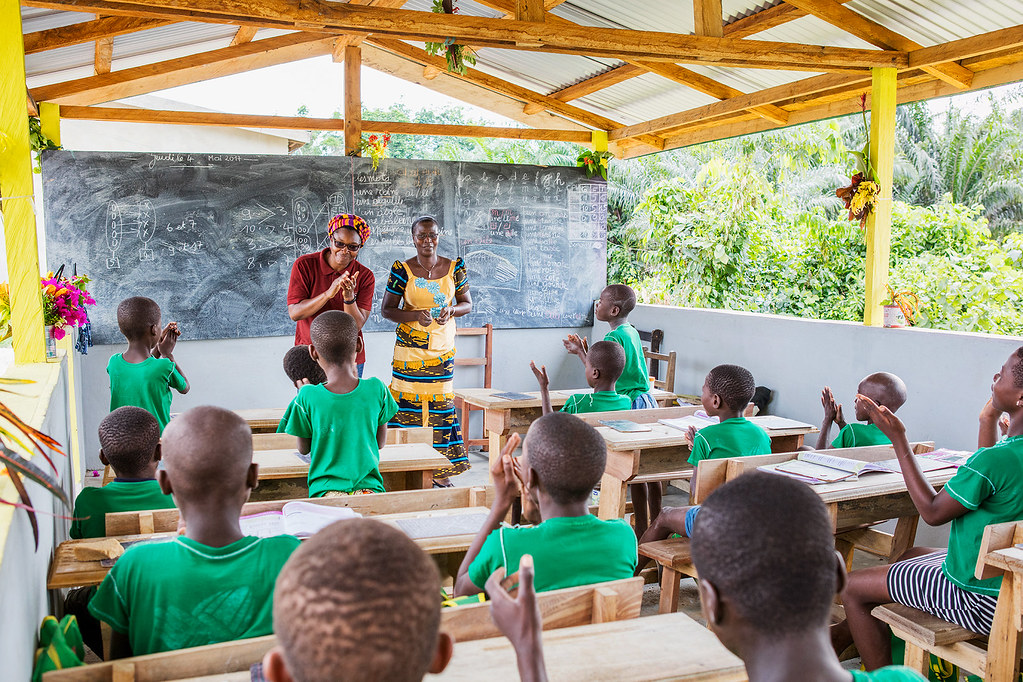A resilient classroom? Isn’t it the students that need to be resilient? Yes, you’re right, but one great way to encourage this is to build your classroom ‘environment’ into a fortress; somewhere that resilience is taught, practised and mastered. Creating a resilient classroom environment is crucial for developing students’ wellbeing and academic success. As educators, we have the unique opportunity to shape our classrooms into spaces where students feel safe, supported, and empowered to overcome challenges. A classroom that will help them build resilience. Let’s look at how this can be done, drawing on my experiences and research in the field of resilience and education.
Understand Resilience
How do we define resilience? Resilience is the ability to bounce back from adversity, adapt to change, and keep going in the face of challenges. It’s a skill that can be developed and strengthened over time, and it plays a vital role in students’ academic and personal lives. By creating a resilient classroom, we are handing students the tools they need to navigate difficulties and succeed both inside and outside of school.
Resilience isn’t just about bouncing back; it’s about growth and transformation. Believe it or not, after everything that’s happened to me and coming so close the dark side, I have developed exponentially as a human. This involves the ability to face challenges head-on, learn from setbacks, and emerge stronger. In an educational context, resilience helps students cope with academic pressures, social dynamics, and personal challenges (plus just the stresses of being young), enabling them to maintain their focus and motivation. As educators, our role is to create an environment that supports this growth.
Build a Supportive Classroom Culture
The baseline of a resilient classroom is a supportive and inclusive culture. Establishing clear expectations is key. Set clear, consistent expectations for behaviour and academic performance. This provides students with a sense of stability and understanding of what is required to succeed. Reinforce these expectations regularly and fairly, ensuring all students feel accountable, valued, and heard.
Promoting positive relationships is also vital. I’m talking about peer-to-peer relationships, as well as student and teacher relationships. Everyone needs to be on the same page, reading the same chapter in the same book… if you catch my drift. This can be achieved through team building activities, group projects, and open communication. Model empathy and kindness in your interactions with students, creating a classroom atmosphere where everyone feels respected and heard.
Fostering a growth mindset is another critical aspect. Teach and encourage a growth mindset, the belief that abilities and intelligence can be developed through effort and perseverance. Use language that emphasises effort and improvement rather than natural ability. Celebrate mistakes as learning opportunities and reinforce the value of persistence.
A resilient culture means recognising and celebrating each student’s unique strengths and contributions. Acknowledge their efforts and achievements, no matter how small, and provide constructive feedback that encourages further growth. Doing this will help build their confidence and sense of control over their own minds and education.
How: Strategies for Enhancing Resilience
As well as building a supportive culture, there are strategies you can put in place to enhance resilience in your classroom. Incorporating mindfulness practices into your daily routine is one effective approach. We all know my thoughts on mindfulness and meditation, so you knew it was coming. Practices such as deep breathing, meditation, and mindful listening can help students manage stress and stay focused. Start with short, simple exercises and gradually introduce more complex practices as students become more comfortable.
Encouraging self-reflection is another powerful strategy. Encourage students to reflect on their experiences, emotions, and responses to challenges. Journaling, group discussions, and personal reflection time can be effective methods. Help students identify their strengths and areas for growth, fostering self-awareness and self-regulation.
Mindfulness Practices
I know what you’re thinking, here he goes again, but hear me out. These are mindfulness things you can do with your class. Mindfulness practices can play a significant role in enhancing resilience. By incorporating mindfulness activities into your daily routine, you can help students develop skills to manage stress and maintain focus. Start with simple exercises, such as deep breathing or mindful listening, and gradually introduce more complex practices like meditation or guided imagery. Mindful colouring is also a good one.
For example, begin each day with a short breathing exercise. Ask students to sit quietly, close their eyes, and take deep breaths in and out. Encourage them to focus on their breath and let go of any distracting thoughts of the past or future. This practice can help students start the day feeling calm and centered.
Another effective mindfulness practice is mindful listening. One thing that is definitely NOT an innate trait of children. Nevertheless, like everything else, this can be taught. During a designated time, ask students to close their eyes and listen to the sounds around them. After a few minutes, have them share what they heard. This activity not only enhances their listening skills but also helps them stay present in the moment.
Resilience Building Activities
Engaging students in resilience building activities can further enhance their ability to cope with challenges. Problem solving tasks, role-playing scenarios, and resilience themed games can be effective tools. These activities provide students with opportunities to practice overcoming obstacles in a safe and supportive environment (because remember, you’ve already built a supportive environment for your students).
For instance, create a role-playing scenario where students must work together to solve a problem. This could involve a hypothetical situation, such as being stranded on a deserted island and needing to find resources to survive. Through this activity, students learn to collaborate, communicate, and think creatively under pressure. This works really well out in the field too. Putting your students on a deserted island… is probably not the best way to go. You might get a few angry parents. In fact, pretend I didn’t say that! Just do it in the classroom.
Resilience themed games (in the classroom, not on an island) can also be a fun and engaging way to build resilience. Games that require strategic thinking, adaptability, and perseverance can help students develop these skills in an enjoyable way. For example, consider using board games like "The Game of Life" (a family favourite) or "Harry Potter: Hogwarts Battle" that involve decision making and/or teamwork.
Create a Resilient Physical Environment
The physical classroom environment also plays a significant role in promoting resilience. Flexible seating arrangements can support collaboration and communication, adding to the “supportiveness” of your classroom. (*Please note* Not so good for neurodiverse students that work best with predictability). Arrange seating to support collaboration and communication, and consider flexible seating options to accommodate different learning styles. Allow students to choose their seating arrangements regularly to promote a sense of ownership and autonomy.
Inspiring and calm decor can enhance students’ sense of wellbeing too. Decorate the classroom with inspiring quotes, student artwork, and calming colours. A visually appealing and soothing environment can enhance students’ sense of wellbeing. Ensure that the classroom is organised and clutter free, creating a space that is conducive to focus and learning.
Designating safe spaces in the classroom can help students manage their emotions. Designate areas in the classroom where students can go to calm down and regroup if they are feeling overwhelmed. These spaces can include comfortable seating, calming objects, and mindfulness resources. Teach students how to use these spaces effectively, promoting self-regulation and emotional resilience.
For instance, you might create a "peace corner" with soft cushions, stress relief tools like fidget spinners or stress balls, and calming visuals such as nature images. Encourage students to use this space when they need a break or feel overwhelmed. Teaching them how to recognise when they need a break and how to use the space responsibly can empower them to manage their emotions effectively.
Setting and Achieving Goals
Goals provide students with a clear roadmap to follow, helping them stay focused and motivated. Setting and working towards goals is a powerful strategy for building resilience, as it gives students a sense of direction and purpose.
Start by teaching students how to set SMART goals—Specific, Measurable, Achievable, Relevant, and Time-bound. Help them break down larger goals into smaller, manageable steps and create action plans to achieve them. Regularly review and adjust these goals as needed, providing support and encouragement along the way.
Incorporate goal setting into your classroom routines. For example, have students set academic and personal goals at the beginning of each term and periodically check in on their progress. Use visual aids, like goal charts or progress trackers, to help students see their achievements and stay motivated.
Encourage students to celebrate their successes, no matter how small, and to learn from their setbacks. Help them understand that setbacks are a natural part of the goal setting process and an opportunity for growth. By guiding students through the process of setting and achieving goals, you help them develop resilience and a sense of accomplishment.
Applying Perseverance to Overcome Challenges
Perseverance is the determination to keep going despite difficulties and setbacks. It is a crucial component of resilience, enabling students to stay committed to their goals and overcome obstacles.
Teach students the importance of perseverance by sharing stories of individuals who have overcome significant challenges through determination and hard work. Use real life examples, historical figures, or even personal anecdotes to illustrate the power of perseverance.
Create opportunities for students to practice perseverance in the classroom. Set challenging tasks that require sustained effort and encourage students to keep trying even when they encounter difficulties. Provide support and guidance, but also allow them to struggle and find solutions on their own.
Celebrate perseverance by recognising and rewarding students who demonstrate determination and resilience. Highlight their efforts and progress, and encourage them to reflect on how their perseverance helped them achieve their goals. By reinforcing the value of perseverance, you help students build the resilience they need to face future challenges.
Engaging Parents and the Community
We all know that this can’t be done alone. The parents/caregivers need to jump on board. Building resilience is a collaborative effort that extends beyond the classroom. Engaging parents in their children’s resilience-building journey is important. Provide parents with resources and strategies to support resilience at home. Communicate regularly with parents about their child’s progress and involve them in school activities and events.
For example, consider hosting workshops or informational sessions for parents on topics related to resilience and wellbeing. This is something that is part of the CRASHING INTO POTENTIAL programs. We not only provide presentations for parents, but we also share practical strategies they can use at home to support their child’s emotional health. You can also provide resources such as books, articles, and online tools that they can explore at their own pace.
Community partnerships are another one that can enhance resilience building efforts. Partner with community organisations that offer resources and support for building resilience. This can include mental health services, after school programs, and extracurricular activities. By connecting students and families with these resources, you create a network of support that extends beyond the classroom. Running programs like the GEM Program is a good way to get your whole school community on board.
Creating a resilient classroom environment is an ongoing process that requires dedication, empathy, and a commitment to fostering a positive and supportive culture. Reading this article is one thing, putting it into practice is another. Mastering my suggestions above, we can help students develop the resilience they need to thrive.
Ultimately, by creating a resilient classroom environment, we empower students to take control of their choices, set and achieve goals, develop a growth mindset, and persevere through challenges. These skills are essential for their academic success and overall wellbeing, helping them navigate the complexities of life with confidence and resilience.





